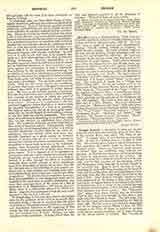

Croagh Patrick, a mountain looking out on the Atlantic ocean from the southern shore of Clew Bay, in the County Mayo, and called “the Sinai of Ireland.” In pagan times it was known as Cruachan Aigli. It rises in a perfect cone to a height of 2510 feet. The account given below is taken from sources that post-date the saint’s death by three to four hundred years. There are, however, good reasons to believe that the traditions they embody are genuine. St. Patrick was careworn and fatigued when he came to this remote part of the country. He longed to retire for a while to refresh his soul in solitude, and for that purpose, on the Saturday before Ash Wednesday in the year 441, he betook himself to the mountain top. Here he spent the days of Lent, chastising his body with fasts, pouring out his heart to God, and entreating Him with prolonged importunity and with tears that the Faith might never fail in the land of Erin. The “Book of Armagh” mentions that God summoned all the saints of Erin, past, present and future, to appear before their Father in the Faith to comfort him with a vision of the teeming harvest his labors would produce, and to join him in blessing their kinsmen and their country. The “Tripartite Life” relates that when Patrick was on Cruachan Aigli in 441, word was brought to him that a new pope ruled the Church in Rome. The new pope was St. Leo the Great, who was consecrated on the 29th of September, 440. Patrick, as soon as he heard it, dispatched one of his disciples named Munis to bear his filial homage to the Vicar of Christ, to render an account of his labors and his teaching, and to beg a blessing for the infant church in Ireland. The “Annals of Clonmacnoise” relate that Munis came back from Rome bearing sacred relics which the pope had given him for the altars that Patrick was erecting everywhere through the country. The same event is briefly referred to in the “Annals of Ulster”, under date of 441: “Leo ordained forty-second Bishop of the Church of Rome; and Patrick the Bishop was approved in the Catholic Faith“. It adds a special glory to Croagh Patrick that the first tribute of homage from the Irish Church to the Chair of Peter was sent from its hoary summit. From that sacred spot, on Holy Saturday, Patrick with outstretched hands solemnly blessed the men of Erin that they might cling to the Faith, and the land of Erin that no poisonous reptile might infest it. Then, refreshed with Divine grace and comforted with the assurance that his labors would fructify forever, he came down from the mountain to celebrate Easter with the little flock he had left at Aughagower.
From the days of the saint himself pilgrims began to do penance on his holy mountain. References to them are found in many pages of the annals of the country. It is recorded that in the year 1113, on the night of the 17th of March, during a thunderstorm, thirty of the pilgrims perished on the summit. The “Annals of Boyle” relate that Hugh O’Connor, King of Connaught, who came to the throne in the year 1225, cut off the hands and feet of an outlaw who dared to molest a pilgrim on his way to Croagh Patrick. The following document of Pope Eugene IV, dated September 28, 1432, shows how this ancient pilgrimage was recognized and honored in Rome. “A relaxation of two years and two quarantines of enjoined penance, under the usual conditions, to those penitents who visit and give alms for the repair of the chapel of St. Patrick, on the mountain which is called Croagh Patrick whither resorts a great multitude of persons to venerate St. Patrick the Sunday before the feast of St. Peter’s Chains” (Calendar, etc., of Papal Registers, Vol. IV). From St. Patrick’s own time there had been some sort of a little chapel on the summit.
The “Tripartite Life” relates that the apostle himself celebrated Mass on the mountain, from which we infer that he had an altar and a place to shelter it. For several centuries the Archbishops of Armagh laid claim to this chapel on the grounds that it was founded by St. Patrick and that they were his successors; but the Archbishops of Tuam contended that it belonged to their jurisdiction. Finally, Pope Honorius III on the 30th of July, 1216, assigned it to the Archbishop of Tuam (Calendar Pap. Reg., Vol. 1). But in penal times when Murrisk Abbey at the mountain’s base was dismantled, the venerable relic on the summit was demolished. Still the pilgrims never ceased to go there. It was not, however, till 1905 that the chapel on the heights was rebuilt, and then on the 30th of July, Archbishop Healy dedicated it to St. Patrick in the presence of many pilgrims. The day of annual pilgrimage from time immemorial has been the last Sunday in July. On that day about twenty Masses are celebrated within the little chapel while often there have been more than 20,000 persons kneeling without.
MICHAEL MACDONALD


